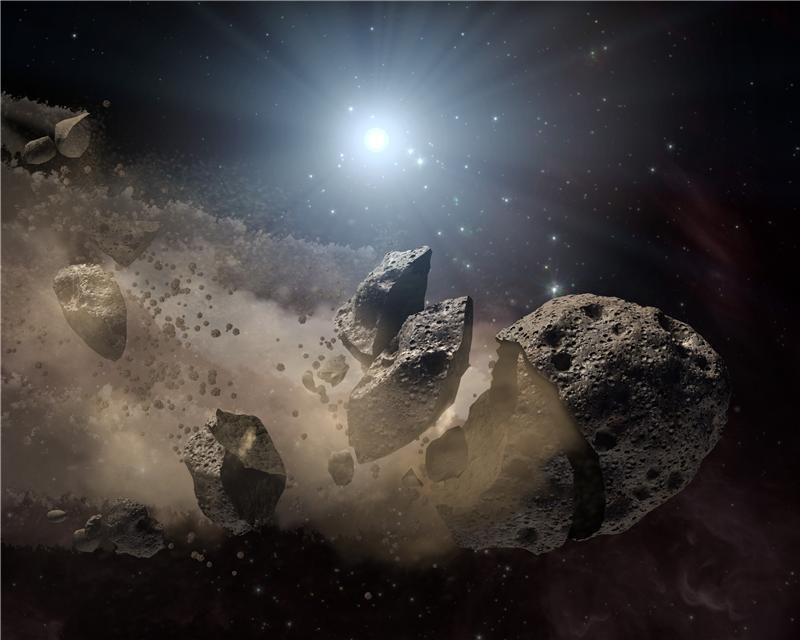Using NASA’s Spitzer Space Telescope, an international team of astronomers have found that at least 1 in 100 white dwarf stars show evidence of orbiting asteroids and rocky planets, suggesting these objects once hosted Solar Systems similar to our own. Team member Dr Jay Farihi of the University of Leicester will present this discovery on Monday 20th April at the European Week of Astronomy and Space Science conference at the University of Hertfordshire.
White dwarf stars are the compact, hot remnants left behind when stars like our Sun reach the end of their lives. Their atmospheres should consist entirely of hydrogen and helium but are sometimes found to be contaminated with heavier elements like calcium and magnesium. The new observations suggest that these Earth-sized stars are often polluted by a gradual rain of closely orbiting dust that emits infrared radiation picked up by Spitzer.
The data suggest that at least 1% to 3% of white dwarf stars are contaminated in this way and that the dust originates from rocky bodies like asteroids (also known as minor planets). In our Solar System, minor planets are the left over building blocks of the rocky terrestrial planets like the Earth. The Spitzer results imply that asteroids are found in orbit around a large number of white dwarfs, perhaps as many as 5 million in our own Milky Way Galaxy.
 NASA's Spitzer Space Telescope set its infrared eyes upon the dusty remains of shredded asteroids around several dead stars. This artist's concept illustrates one such dead star, or "white dwarf," surrounded by the bits and pieces of a disintegrating asteroid. These observations help astronomers better understand what rocky planets are made of around other stars. Image: NASA / JPL - Caltech
NASA's Spitzer Space Telescope set its infrared eyes upon the dusty remains of shredded asteroids around several dead stars. This artist's concept illustrates one such dead star, or "white dwarf," surrounded by the bits and pieces of a disintegrating asteroid. These observations help astronomers better understand what rocky planets are made of around other stars. Image: NASA / JPL - Caltech
The new findings indicate the dust is completely contained within the Roche limit of the star -- close enough that any object larger than a few kilometres would be ripped apart by gravitational tides (the same phenomenon which led to the creation of Saturn's rings). This backs up the team’s hypothesis that the dust disks around white dwarfs are produced by tidally disrupted minor planets. In order to pass this close to the white dwarf, an asteroid must be perturbed from its regular orbit further out – and this can occur during a close encounter with as yet unseen planets.
Because white dwarfs descend from main sequence stars like the Sun, the team’s work implies that at least 1% to 3% of main sequence stars have terrestrial planets around them. Dr Farihi comments. “In the quest for Earth-like planets, we have now identified numerous systems which are excellent candidates to harbour them. Where they persist at white dwarfs, any terrestrial planets willlikely not be habitable, but may have been sites where life developed during a previous epoch. “
Perhaps the most exciting and important aspect of this research is that the composition of these crushed asteroids can be measured using the heavy elements seen in the white dwarf.
Dr Farihi sees this as a crucial step forward. “With high quality optical and ultraviolet observations (e.g. the Hubble Space Telescope), we should be able to measure up to two dozen different elements in debris-polluted white dwarfs. We can then address the question, “Are the rocky extrasolar planets we find similar to the terrestrial planets of our Solar System?”